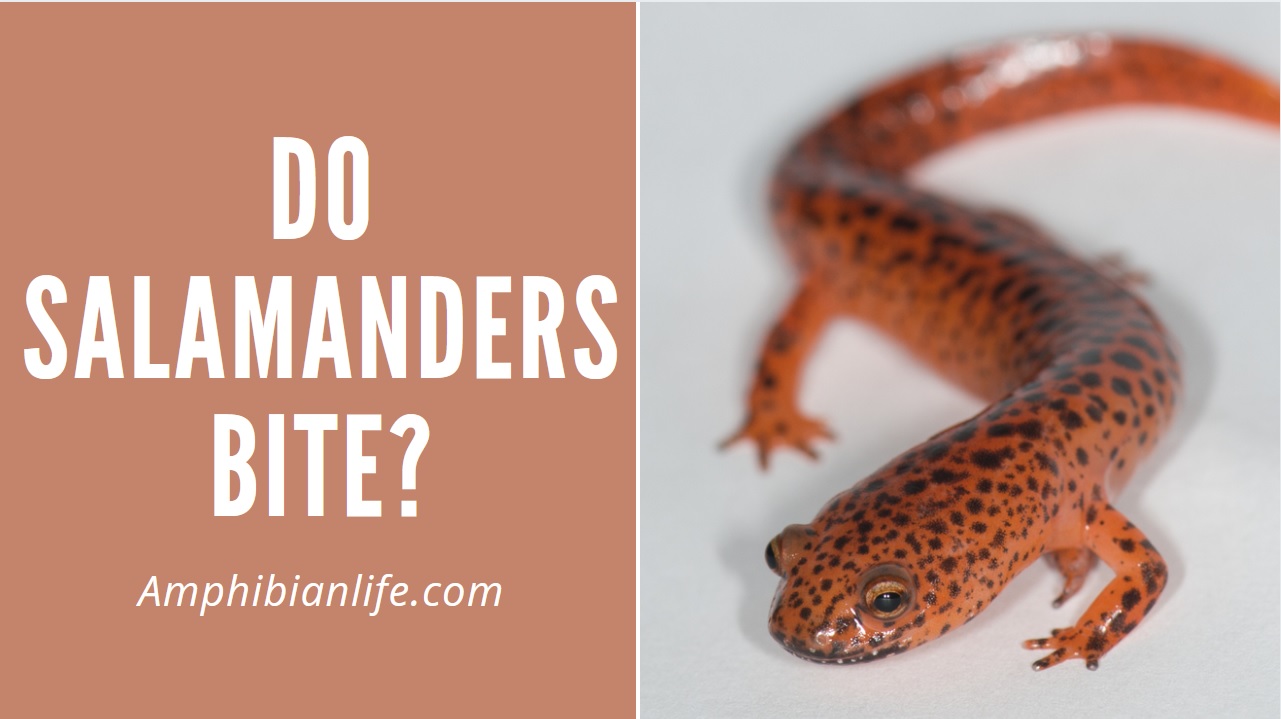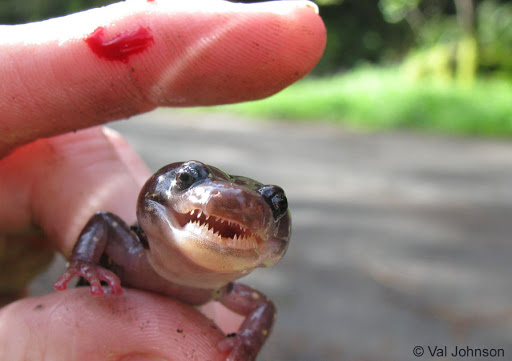
Salamanders are the kind of animal that intrigue me. Not because they are dangerously looking (although some are) but because I find them a bit mystical.
I say this because when I was on holiday last summer, I was given the opportunity to see the movements of a salamander for about half an hour when I was sitting on the balcony of the apartment.
It looked like such a shy animal and don’t know why, but I wondered if it would hurt when you got bitten by such a shy animal.
Now that the thought about the summer popped into my head this week, I also thought about the question and found out that I still didn’t know if salamanders bite. So I did some research and this is what I found.
So, do salamanders bite? The short answer is yes. They can bite. Now, this is not to say that salamanders will bite in everything. They are shy animals that almost only bite in their food.
But a salamander may mistake your hand for food when you’re trying to put it (or when they live in captivity when you try to feed them) and that bite you. However unlikely, I would still recommend that you treat them with caution.
Do you want to know more about the bites of salamanders, if they have teeth and if the bite can be poisonous to you?
Do salamanders bite and do they have teeth?
Salamanders, the majority of the many wonderful and fascinating species, have teeth but are not prone to biting.
The other types or species of this amphibian creature do not even have teeth.
In general, they are shy creatures, quite docile, and like to stay away from anything that isn’t their primary food source.
The food that they do eat wary greatly dependent on the species themselves.
The smaller species such as the dusky salamander they primarily feast on all kinds of insects, from worms to moths, spiders, beetles, and all kinds of larvae.
They use their teeth to help them steady and as precisely as possible swallow their prey.
They have a very slow metabolism. It can take weeks for them to digest everything that they have swallowed.
The larger species of this animal, such as the Japanese giant salamander eats a wide variety of sea creatures such as fish, crabs, other types of amphibians.
In some cases, when the food source that they crave is unavailable, the larger salamanders might resort to cannibalism.
In general, their teeth are placed on both the bottom and the upper jaw. They are quite small, proportional to the rest of their body.
Does it hurt when they bite?
It is highly unlikely. The species that do have teeth are quite small. Their teeth are tiny.
It might feel like a prick by a dozen or so tiny needles but Their jaws are not as powerful as you imagine.
The average salamander one might get as a pet isn’t an aggressive animal.
If you by some chance scare him or her, and the poor little creature bites you do not feel surprised.
But the pain itself should not be some terrible and hard ordeal to suffer thought.

Can a salamander bite be poisonous?
The majority of poisonous salamanders have glands around their body where they produce poison.
later, when the salamander is in danger, or when they go hunting for prey, they secrete poison.
In most cases, the poison is more around the skin, far from the mouth of the creature.
The only dangerous exception to this rule is the fire salamander.
This small creature with skin as black as the night and bright yellow dot on top of the black has poison glands that are closed to its mouth.
This means that even if the bite isn’t poisonous if you get bitten and the bites penetrate your skin.
You might rub that bitten area around the head of the fire salamander that has indeed been covered with poison.
The poison that this species of salamander produces can be very strong and cause strong muscle convulsions invertebrates.

Is a bite from a salamander dangerous for people?
When one considers the bite of a salamander in all its potentiality and actuality, it is not dangerous for people. In the first case, the chances that a salamander will bite you are very very slim.
They are quite the docile creature, tame, and like to busy themselves with what’s on their agenda, mostly food, tens of times smaller than your average human.
Only in the case that we mentioned above, and that case itself is highly unlikely since you would have to been bitten very nastily by a docile species of animal,
that bite would have to brush against the animal in a very specific angle against a very specific part of their head or body.
There are ways in which salamanders can be dangerous for people, but, biting is not something one should fear when dealing with or keep a salamander.

Can they be otherwise poisonous?
Yes, and very much so. The majority of the numerous species of salamander are in fact poisonous.
They secrete poison on their skin, mostly their back or tail. Some species use their tail to hunt. It would be more accurate to say that they sacrifice the tail to gain food.
They secrete a large amount of poison to kill their prey and offer that tail to an unsuspecting animal,
who, not knowing any better, will conclude that it has gone from prey to the ultimate predator, to whom the animals offer themselves up all by themselves.
But that is all a ploy for the salamander to get its filling.
The animal will eat the tail and die a few moments later, its corpse now a delight to the salamander’s appetites.
That is why you have to be both careful and knowledgeable with a salamander. You need to know what species are poisonous and which are not.
Moreover, If the species produces poison, you should know where they secrete the toxic matter.
Do not just pet it all over its body like it were a dog or a cat, it could cost you greatly if you touch a wound, your eye, or the inside of your mouth by accident later down the line.
Being irresponsible around a salamander can hurt you. In most cases, the poison will only cause skin irritation.
But touching a salamander can be dangerous for the animal as much as it is dangerous for a human.
All kinds of skin products that one uses daily can have chemicals that could cause harm to the animal. The harm can be quite striking.
Since the skin is connected to the rest of the body, without any natural barriers for the bad stuff that could run through the skin, the chemicals might attack not only the skin but also damage the skeleton below the skin.
That is why it is always the best policy to use vinyl gloves or keep washing your hands with water only.
Or avoid touching them in general, unless you really have to. Be more careful around younger salamanders.
As the age of salamander, increases The level of toxicity and its concentration usually decrease.
Conclusion
By now you know a lot more about salamanders and their biting habits. You have learned that however unlikely, salamanders bite when they mistake your hand for food and that they only want something do to with their primary food source.
I hope that you have learned that you have to be cautious when you think about touching a salamander.
Not only because it can be damaging for the animal, but it can also be dangerous for yourself (not deadly).
Irritation on the eyes or other parts of the body is never a fun thing to have and always avoid it.
I also hope that you have learned a little more about how the poison gets secreted with salamanders and how it gets secreted over de body of the animal.
For further reading
If you found this article helpful and you enjoyed reading it, I think you will also enjoy the articles below.
Do you want to know where salamanders live? Here’s an article I wrote about where they live.
Do you want more information about if salamanders are poisonous and dangerous for people?
